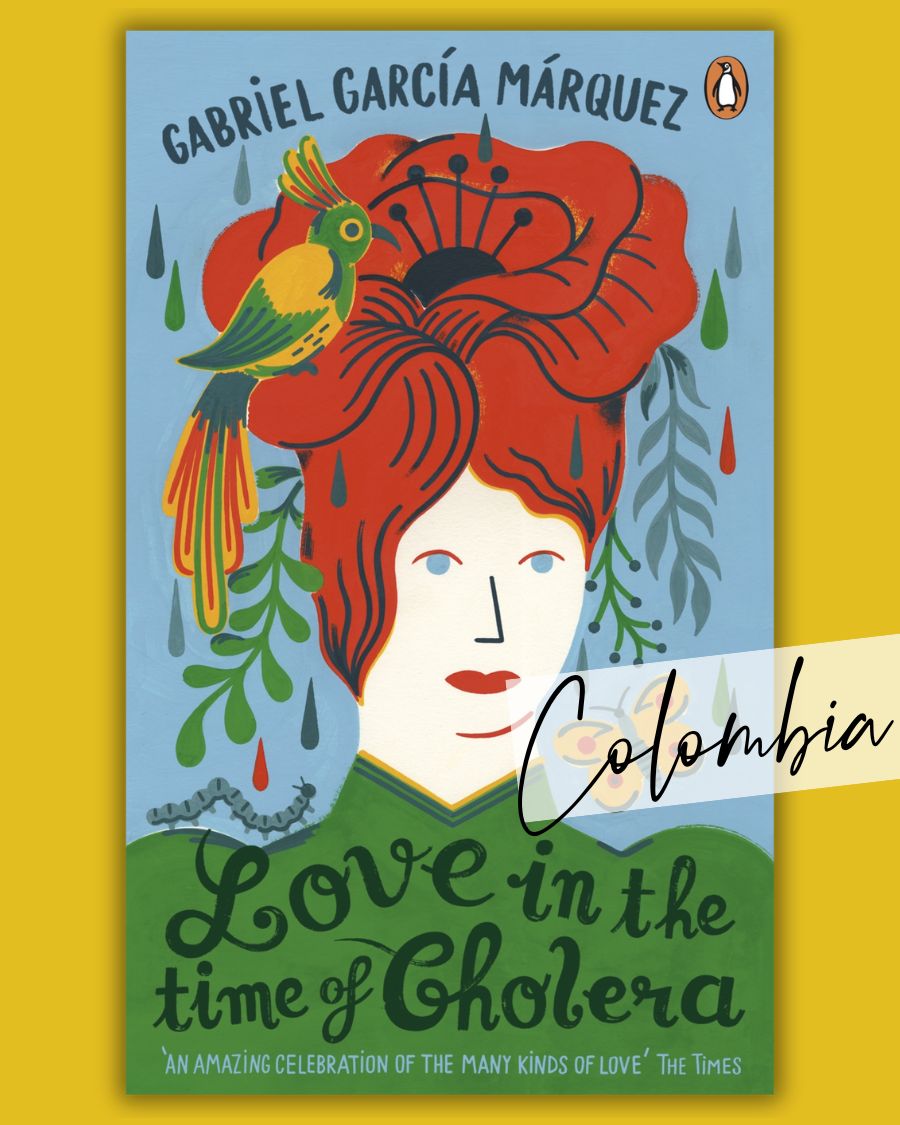
Love in the Time of Cholera by Gabriel García Márquez is a love story that spans a lifetime. It takes place in a fictional unnamed town, near where Colombia‘s Magdalena River meets the sea. The story is beautifully entwined with motifs of flowers, birds and colours. The Caribbean setting of the novel is felt consistently throughout. Even the changeable Caribbean weather mirrors what’s happening to the characters. Heavy rain and storms signify upset and change. As always, García Márquez’s writing is exquisite. Sentences are so beautiful that they often need to be re-read a second or third time. (I’m an unashamedly slow reader when enjoying his novels).
What is Love in the Time of Cholera About?
In a nutshell, Love in the Time of Cholera is about a man, Florentino Ariza, who falls in love. He falls head over heels for the beautiful and strong-willed Fermina Daza. Ultimately, Fermina Daza ends up marrying another man. But, Florentino Ariza continues to love her, to the point of obsession, throughout his lifetime. He vows to wait until her husband eventually dies, and then he will approach her again. The book is set against a backdrop of political upheaval, environmental destruction and the ravages of Cholera. We absorb much of the painful history of Colombia at the turn of the 20th century as we follow the long lives of these characters.
[Spoilers ahead]
A Beautiful Love Story Then?
But this love story is not quite as straightforward as it seems. There is the story we want. The one that would go so well with the beautifully crafted prose imbued with gorgeous Caribbean scents and colours. The story of two old souls finally getting together after a lifetime of being apart. The beautiful love story of a generation. However, if we read carefully, without ignoring the parts that are inconvenient, we get a very different tale.
The interpretation of this being about two oldies finally getting it on after a lifetime of pining for each other is facile. It would amount to seeing what we want to see, rather than what’s actually on the page. It ignores the viewpoint of Fermina Daza completely. She actually rejects Florentino Ariza. She realises at 18 that the feelings she had for him in her youth were merely an illusion of love. And ignoring the thoughts of the main female character just to focus on the male character getting what he wants? I don’t think that’s the point of the story. If it were, the novel would be written from Florentino Ariza’s perspective only.
So, What Are We Thinking?
I feel as though García Márquez is playing with our emotions. It would be so easy to feel so sorry for the forlorn Florentino Ariza as he suffers in the throes of unrequited love. So much so in fact, that love in this novel is likened to Cholera. Love itself is a plague that causes immense suffering. In the opening passages we learn that love is so painful that the scent of bitter almonds (i.e. the poison cyanide) is associated with the agony caused by love.
But – casting our natural instinct to feel sorry for this man aside, if we look at the facts, he’s actually quite dislikable. His behaviour towards Fermina Daza is basically stalking. He rapes and impregnates a maid in his household. (This is all summed up in a few sentences as though she is of no consequence or value at all). And, in the very end when he is already an old man, he abuses his position of guardianship over the child América Vicuña in order to molest her. This ultimately leads to her suicide. Instead of remorse, Florentino weeps only for what he himself has lost. He realises he loved América and misses her. But there is no mention of guilt for the pain he caused América by violating her and then casting her heartlessly aside.
The book’s final conclusion of Florentino Ariza finally getting his own way and sailing off into the sunset with Fermina Daza, in a turn of events it transpires he has been carefully planning, sends a chill down my spine. I wonder whether the author meant it this way (he is clever and playful in his writing after all) or whether this is just my own interpretation of the events through the lens of the society and culture I live in today. But, if the premise of the novel is that love is a disease, like Cholera, it may be reasonable to conclude that Florentino Ariza is, quite simply, mad.




Leave a Reply